Event Summary
Universities as Regenerators: Summary, slides + pictures
With higher education institutions playing an increasing role in the growth of cities, Place North West hosted a conference at the Citylabs 1.0 science workspace off Oxford Road in Manchester city centre, sponsored by Sheppard Robson, Hill Dickinson and Manchester Science Partnerships.
See below for gallery of photos from the day
Click here for presenters’ slides
 The event attracted a packed room of representatives from across the education property sector, with talks on cross-discipline working, funding, estate strategy and design best practice.
The event attracted a packed room of representatives from across the education property sector, with talks on cross-discipline working, funding, estate strategy and design best practice.
Rupert Goddard, partner at architect Sheppard Robson, launched proceedings with an overview of how the branding and vision for a development could shape effective regeneration, particularly in the face of changing education trends and student demands.
“Campus living remains a powerful attraction for students, but the view of the campus is changing. There’s a more integrated relationship between the campus and commercial life.” Goddard pointed to Manchester Metropolitan University’s £139m Birley Fields campus, designed by Sheppard Robson, as an example of this new approach, where “a campus doesn’t have to be an ivory tower, but can very much be part of the city”.
Thinking beyond the traditional campus was a key part of the Birley Fields brand, said Goddard. “The brand, or vision, follows all the way through, it forms decisions from the masterplan to the building itself. It is an idea applied consistently.”
Helen Wilding, deputy director of science and business policy at New Economy Manchester, gave a positive message around the policy context of science and universities, calling universities a “powerhouse” in economic regeneration.
“The role of universities is critical to the economic and social life of the conurbation”, she stressed. “We have 100,000 students which equates to 4% of the population in Greater Manchester, and research shows that every student in the UK spends £9,000 a year on top of tuition fees.
“The expertise of universities has far reaching commercial applications; but it’s all about getting the cutting edge ideas to translate into jobs and growth.”
Despite the recent gains for Manchester from central government, such as plans for the £235m Sir Henry Royce Advanced Materials Institute to be based at the university, Wilding highlighted the continuing battle to wrest funding away from southern universities.
“The lion’s share of research funding ends up in the golden triangle of London, Cambridge and Oxford, but what does that mean for the economy of Manchester? That conversation on how this can change has happened before to little success, but that conversation has to happen again.”
Following their presentations, Goddard and Wilding were joined for a panel discussion by Chris Musson, chief executive of Liverpool Science Park, the 120,000 sq ft science workspace within Liverpool’s Knowledge Quarter.
“We’re a not for profit company with 60 companies occupying our space”, he said. “As a regenerator, we plan for success, but we don’t have to be certain of how that success will happen.
“In Liverpool we’re creating an effective knowledge quarter. For a long time the science park site was known as the wilderness site; and now other difficult sites such as Liverpool John Moore University at Copperas Hill are being brought forward, and it’s all coming together.
“To do that we needed to plan together and build together. Do it early enough you can get the win-wins and ensure the city benefits as much as possible, but you have to take a risk.”
Presenting the University of Wolverhampton as a case study, head of estates Henry Gun-Why took to the stage to talk about his strategy for the 1.7m sq ft university portfolio, currently occupied by 23,000 students and 2,000 staff.
With a £250m pipeline of projects, Gun-Why said that during his time working there the University of Wolverhampton had gone through “a full lobotomy on investment principles”. He was frank: “When I started at the university in 2009 it had turned its back on the community.
“Now the focus is on open frontages and community engagement. The projects that come out have to be transformational and allow the university to punch above its weight.”
According to Gun-Why, working with the city in which the university is based was essential.
“Development is easy, but regeneration takes partnership and patience. We now need to create an approach to define the next phase of projects. People have seen the £250m figure and want it to happen straight away, but it can’t – it takes careful planning.”
Kerrie Norman, director of Flinders Chase, emphasised the importance of the next generation of university students, and looked at how pressures within the further education system were impacting on higher education.
There are 3.1m students in the UK in further education and 2.3m in higher education, choosing between a dizzying array of educational establishments, from schools, academies, studio schools, university technical colleges, sixth form colleges, career colleges or universities. Norman summarised the education landscape as “a fragmented system, and the funding system is equally fragmented, although the money is there”.
She estimated that around £10bn was available to local authorities from capital funding programmes to support regeneration projects, but this was not being accessed effectively due to a lack of co-ordination between educational institutions. In order to successfully bring forward projects, “we need to plan more at a sub-regional level and play to our strengths”.
A development debate concluded the conference, with Gun-Why and Norman joined by Chris Roberts, development director of Bruntwood and Manchester Science Partnerships; Alex Beedle, director of capital projects and estate strategy at the University of Liverpool; and Alan Pugh, partner at Hill Dickinson.
As the developer and landlord of Citylabs, Roberts highlighted the effective joint venture between Manchester Science Partnerships and Central Manchester University Hospitals NHS Foundation Trust in the £25m conversion of the former Royal Eye Hospital. “Citylabs supports a mix of early stage businesses, med tech companies, and established corporates. Its success shows that bricks and mortar are very nice, but it’s what’s going on in and around a building that makes it important”, he said.
Collaboration between universities and the local authorities was key, said Beedle. “You need the help of the city council to make land acquisitions happen, but also to focus economic programmes on creating competitive environments. This is where more of Manchester and Liverpool working together would be most effective, to push each other further. And university estates have a big role to play in attracting the best people to this mix.”
The reputation of some of the North West’s best universities is such that they are increasingly looking further afield to make their mark, according to Pugh. “Universities have a greater urge to market their brands across the world,” he said. “We’re working with the University of Liverpool on a London campus and a Chinese campus. There’s also a private school in Liverpool setting up in the Middle East.”
Our sponsors said:
- Rupert Goddard, partner at Sheppard Robson, said: “It was great be part of the Universities as Regenerators event. Clearly the subject matter was engaging as evidenced by both the turn-out and the level of debate on the day. The speakers demonstrated that the university climate is changing with focus placed firmly on academic collaboration, knowledge sharing and with the regenerative impact of recent estate developments. We’d like to thank Place North West as well as Manchester Science Partnerships and Bruntwood for hosting the event at CityLabs.”
- Alan Pugh, partner at Hill Dickinson: “The event went very well. The speakers were highly engaging, covering interesting subject matters with a broad spectrum of views on the issue of Universities as regenerators. It was particularly interesting to hear first-hand experience of the impact the changes at Wolverhampton University have had on the City.”
- Rupert Goddard, Sheppard Robson
- Helen Wilding, New Economy Manchester
- Chris Musson, Liverpool Science Park
- Kerrie Norman and Henry Gun-Why
- Alex Beedle, University of Liverpool
- Chris Roberts, MSP and Bruntwood
- Alan Pugh of Hill Dickinson



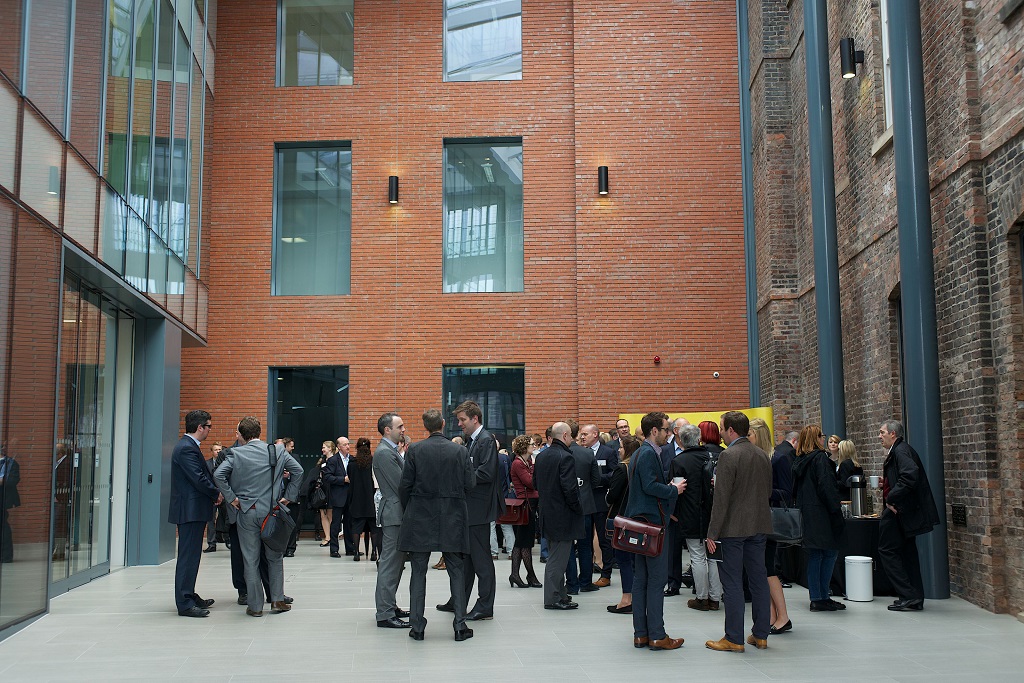



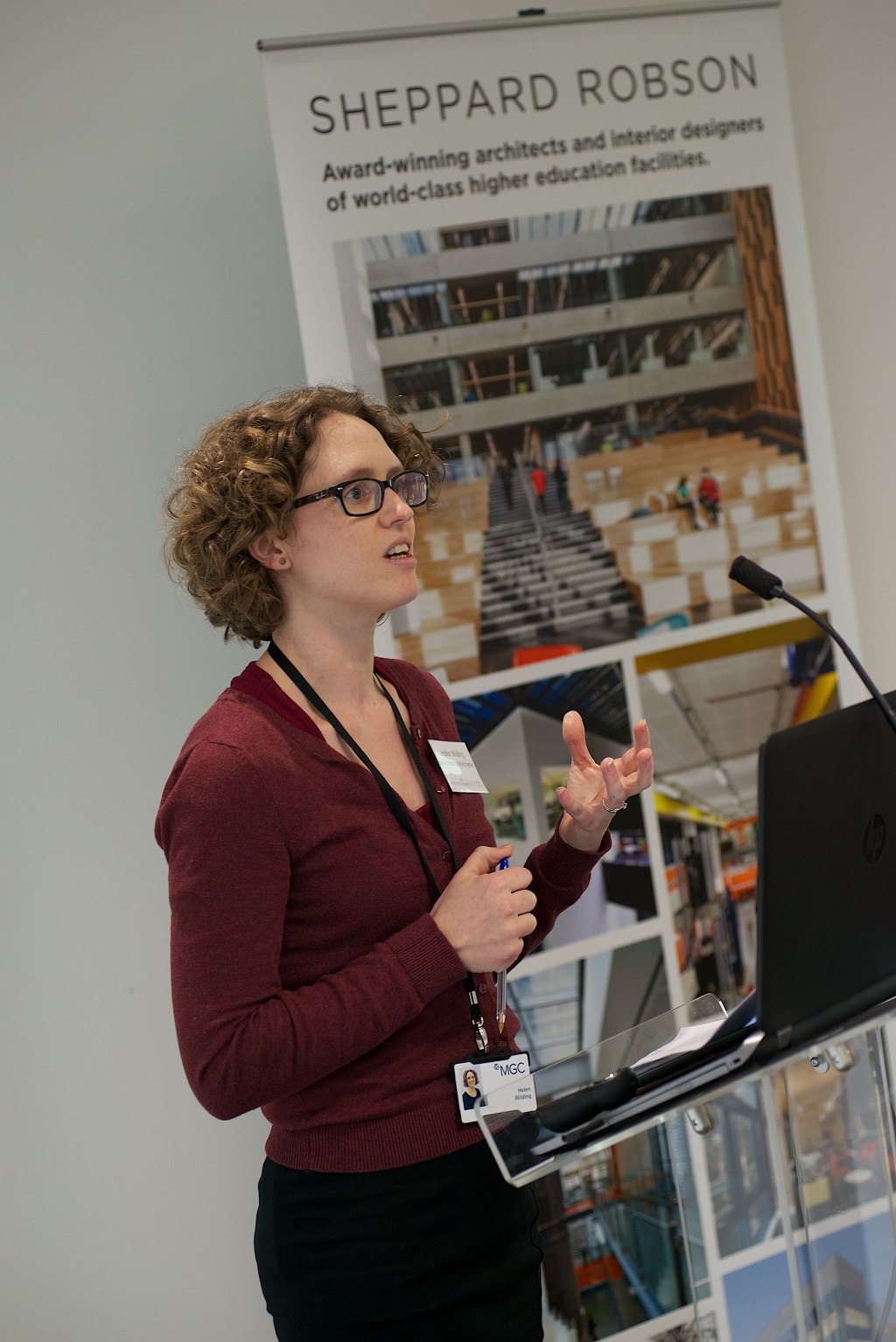





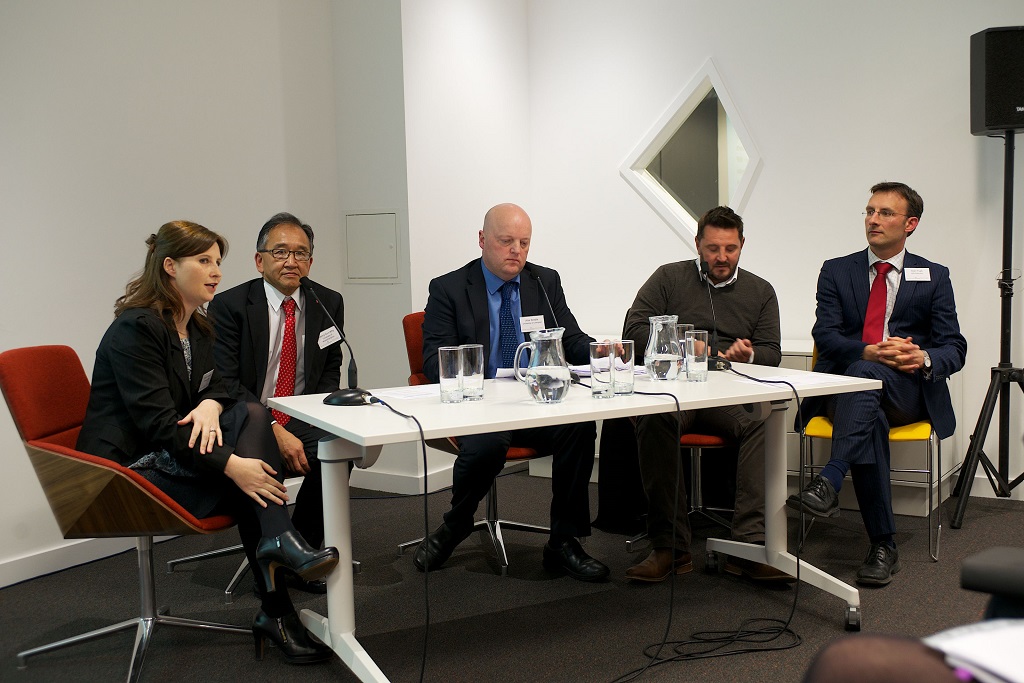



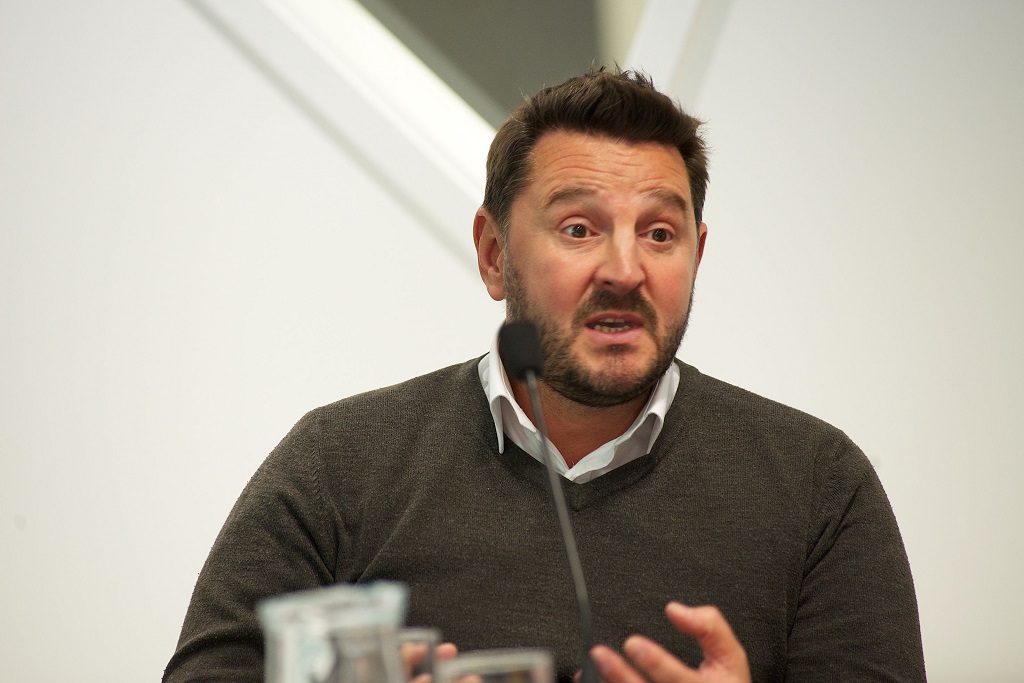
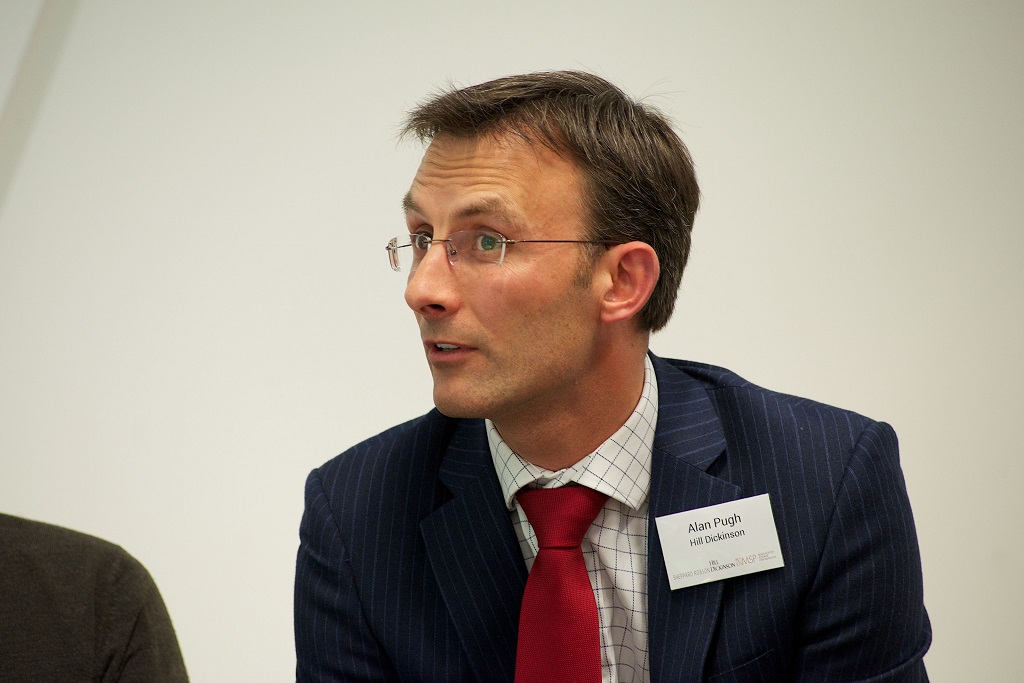

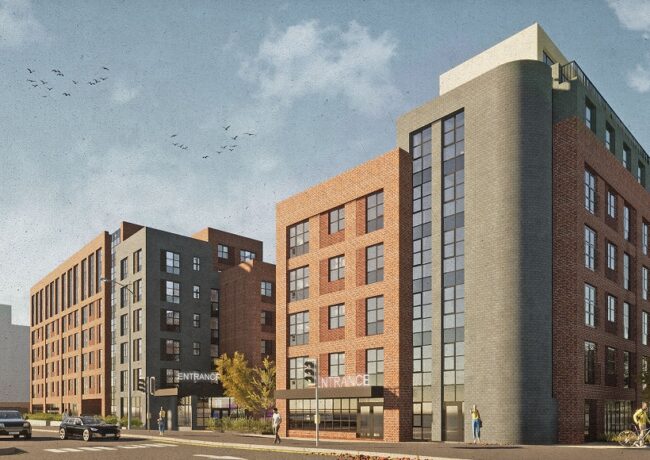

I don’t think MECD could truly be described as either outward facing or landmark. It’s merely a big building designed to accommodate all of the engineering departments on one site. The university has, true to form, chosen expediency and cost effectiveness and thrown away a fantastic opportunity to create an authentic civic landmark that enhances the surrounding area and integrates properly with its context.
Sat in the centre of its site it fails to properly address a single corner, junction or either of the main arterial roads. Despite its vast bulk it will be fairly anonymous when complete and will blend in rather than stand confidently within the surrounding cityscape.
Because it has been shoehorned onto its site, it leaves little room for any meaningful public realm or to graft strong connections through to the Brunswick estate or Oxford Rd – the through route between Upper Brook Street and Oxford Road follows the line of a mains sewer and illustrates how the entire project has been shaped by a series of major compromises rather than by pursuing a compelling architectural and urban design vision.
I have no doubt the finished building will be efficient, facilitate collaboration better and be superficially impressive for a while but once the newness wears off we will be left with a £350m building that fails to deliver anything like the sense of place, identity and pride that the old campus did. In short, because of the university’s complacency, it will not drive wider benefits for the city or the uni’s student cohort that a properly considered plan could have achieved.
By Sir J Whitworth